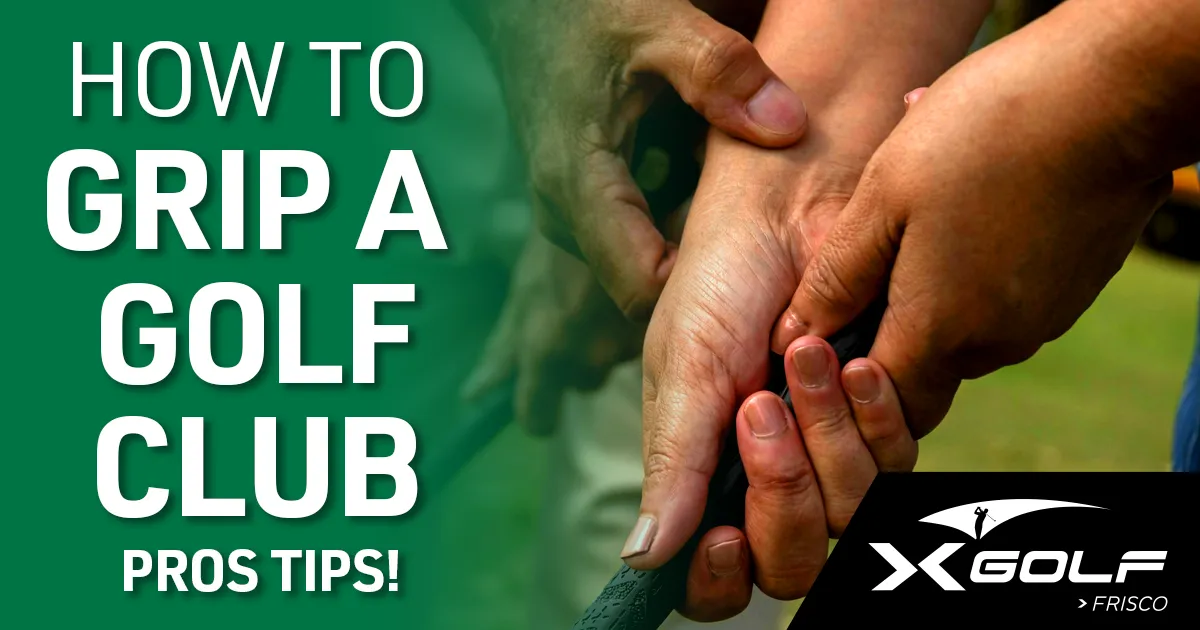
Does your golf grip hold you back from better scores? Understanding the difference between strong and weak grips could be the key to fixing your slice or improving your consistency on the course.
Your golf grip is the only connection between you and the club. Get it wrong, and even perfect swing mechanics won’t save your round. But here’s the thing most golfers don’t realize: there’s no single “correct” grip that works for everyone.
The debate between strong and weak grips has divided golfers for decades. Some swear by the power of a strong grip, while others champion the control of a weak grip. The truth? Both can work beautifully when matched to your swing and ball flight goals.
Understanding Golf Grip Fundamentals
Before diving into grip styles, let’s establish the basics. Your golf grip determines how the clubface behaves throughout your swing.
A neutral grip serves as our baseline. For right-handed golfers, this means both “V’s” formed by your thumbs and forefingers point between your chin and right shoulder. From this neutral position, you can see about two knuckles on your left hand when looking down.
Your grip directly influences three crucial factors: clubface control, swing path, and ball flight patterns. Think of it as the steering wheel of your golf swing.
What Is a Strong Golf Grip?
A strong grip means both hands are rotated more to the right on the grip (for right-handed players). You’ll know you have a strong grip when you can see three or more knuckles on your left hand at address. Your right hand sits more underneath the handle.
This grip style appeals to certain types of players. If you struggle with a slice, have slower swing speeds, or tend to release the club late in your downswing, a strong grip might be your answer.
Tour players like Dustin Johnson, Bubba Watson, Fred Couples, David Duval, and Bernhard Langer have all found success with strong grips. Their power and accuracy prove this isn’t just a grip for weekend hackers trying to fix a slice.
What Is a Weak Golf Grip?
A weak grip involves rotating both hands more to the left on the grip. With a weak grip, you’ll typically see only one to two knuckles on your left hand, and your right hand sits more on top of the handle.
This grip suits golfers who naturally hook the ball or want maximum clubface control for shot shaping. Players who favor accuracy over raw distance often gravitate toward weaker grip positions.
Ben Hogan famously used a weak grip to combat his early tendency to hook. His “secret” involved weakening his grip, opening the clubface on the backswing, and cupping his left wrist. However, Hogan himself warned this approach would “ruin a bad golfer” who typically struggles with slicing.
Modern tour pro Collin Morikawa uses an extremely weak left-hand grip. While this requires compensations in his swing, it provides exceptional clubface control for his trademark fade shots.
Strong Grip Benefits and Drawbacks
The Good News
A strong grip makes squaring the clubface much easier at impact. The grip naturally closes the clubface, which helps eliminate that dreaded slice that plagues most amateur golfers.
You’ll also likely see more distance. Strong grips typically produce a draw ball flight, which rolls more after landing and can add 10-20 yards to your drives.
This grip style particularly benefits players with slower swing speeds or those who struggle to release the club properly through impact.
The Challenges
The biggest risk? Over-closing the clubface and hitting hooks or snap hooks. While a slight draw is great, a big hook isn’t fun for anyone.
Strong grips can also limit your short game performance. The same clubface control that helps with full swings can make delicate wedge shots and putting more challenging.
You might also struggle with trajectory control, particularly with longer irons, as strong grips tend to deloft the club at impact.
Weak Grip Benefits and Drawbacks
The Advantages
A weak grip offers superior clubface control and shot-shaping ability. You can work the ball both ways with confidence and precision.
The natural fade ball flight from a weak grip provides better accuracy and control. Fades land softer and are less likely to run into trouble.
Players like Morikawa demonstrate how weak grips combined with proper technique can produce “laser-like precision” with controlled fades. Your short game will likely improve too, as weak grips offer better feel around the greens.
The Downsides
If you already struggle with slicing, a weak grip will likely make things worse. Most amateur golfers slice the ball, making weak grips unsuitable for the majority of players.
Weak grips require more precise timing and faster hand action through impact. This demands better coordination and more practice to master.
You might also lose some distance, as weak grips typically produce higher, softer ball flights that don’t roll as much after landing.
Which Grip Suits Your Swing?
Choosing the right grip starts with honest self-assessment. What’s your typical ball flight pattern? Do you slice, hook, or hit it relatively straight? What are your most common misses?
Teaching professionals recommend a simple test: make small, waist-high swings with different grip positions. Try strong, neutral, and weak grips. One position will naturally produce a more stable clubface through impact.
Your swing speed matters too. Slower swing speeds often benefit from stronger grips, while faster swingers might prefer neutral or weak positions.
Consider your physical factors as well. Hand size, flexibility, and natural wrist hinge patterns all influence which grip feels comfortable and produces consistent results.
Use golf simulator technology to test different grips with immediate feedback on ball flight patterns, clubface angle, and swing path. This data-driven approach takes the guesswork out of grip selection.
Testing Your Grip with Technology
Modern golf simulators provide data-driven validation of grip changes by showing exact clubface position, swing path, and resulting ball flight patterns.
X-Golf simulators use 4-channel camera systems capturing swings at 2,000fps with 98% accuracy. They measure club path, clubface angle, and impact location – all metrics directly affected by your grip position.
Simulator technology eliminates variables like wind, lies, and course conditions that can mask grip-related ball flight changes. You get immediate, consistent feedback on every swing.
Real-time feedback shows immediate results of grip adjustments without waiting for outdoor range sessions. Data metrics like club path (inside-out vs outside-in) and clubface angle at impact are key indicators of whether your grip produces the desired ball flight.
Making the Grip Change
Experienced players should approach grip changes with caution. Small changes can have major effects on everything in your swing.
Set realistic expectations: allow 2-4 weeks to adjust to a new grip position. Your hands need time to develop the necessary feel and muscle memory.
Practice grip changes on simulators for consistent conditions and immediate feedback without weather limitations. Indoor practice removes seasonal barriers and provides controlled environments for developing new motor patterns.
Work on your grip change systematically. Start with short shots and gradually work up to full swings. Don’t expect immediate results – grip changes often get worse before they get better.
Consider professional instruction, especially for major grip adjustments. A PGA professional can guide you through the transition and help you avoid developing bad habits.
Don’t forget about equipment considerations. Grip size, texture, and material all impact how the club feels in your hands. Sometimes a simple grip replacement can make a bigger difference than changing your hand position.
Find Your Perfect Grip at X-Golf Rockwall
There’s no universally perfect grip – only the grip that’s perfect for you. Strong grips help most amateur golfers by making it easier to square the clubface and eliminate slices. Weak grips offer superior control and shot-shaping ability for more advanced players.
Your ideal grip depends on your current ball flight, swing speed, and skill level. The key is understanding what each grip style does to your ball flight, then choosing the one that best matches your goals and swing characteristics.
Ready to discover which grip transforms your game? Visit X-Golf Rockwall and use our state-of-the-art simulators to test different grip positions with real-time data feedback. Our PGA professionals can help you find the grip that produces consistent results and feels comfortable in your hands.
Book your tee time today and start hitting better shots immediately, or join one of our leagues to practice your new grip with fellow golfers in a fun, supportive environment.


